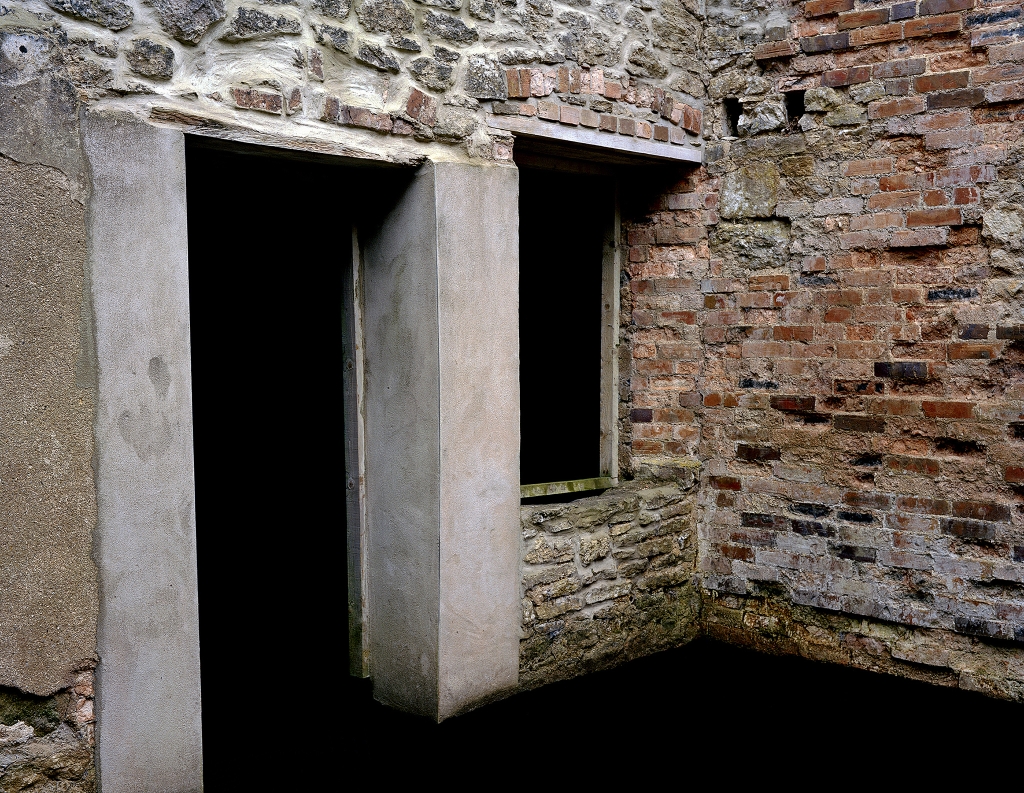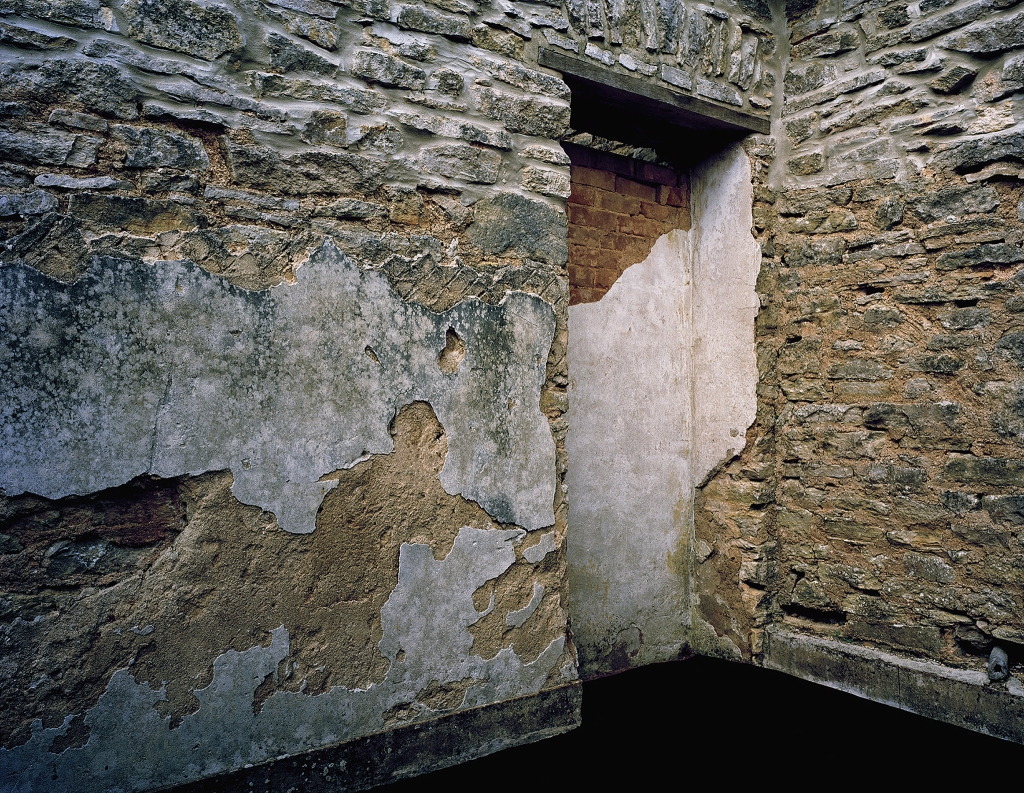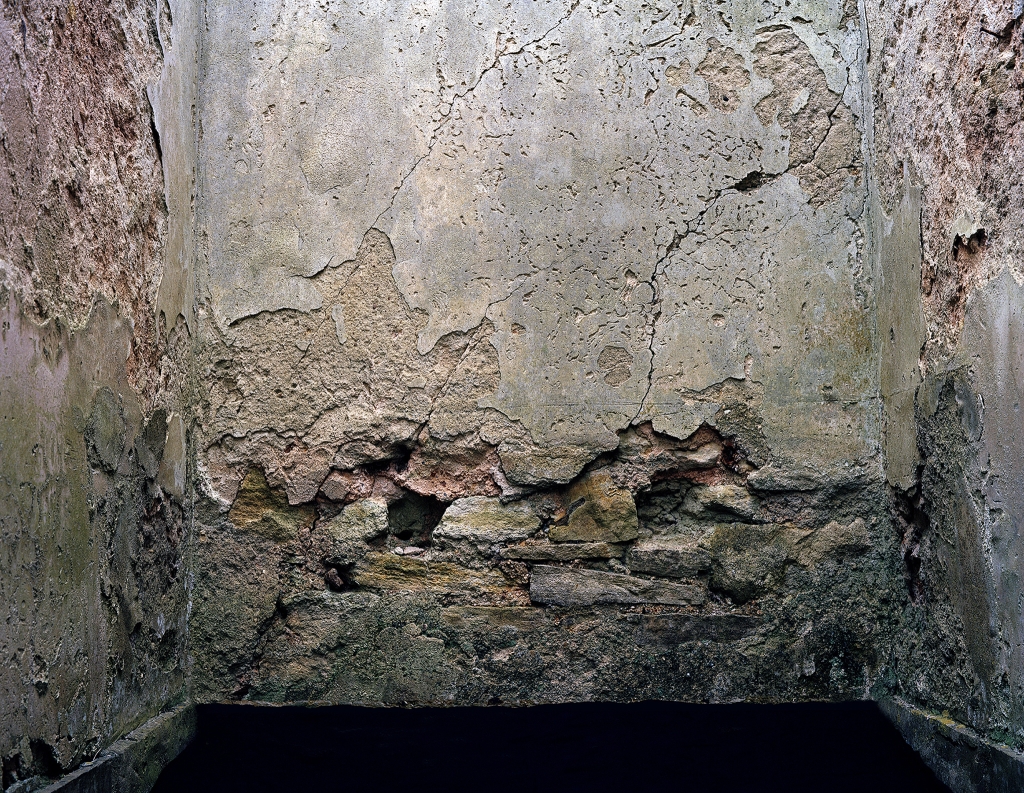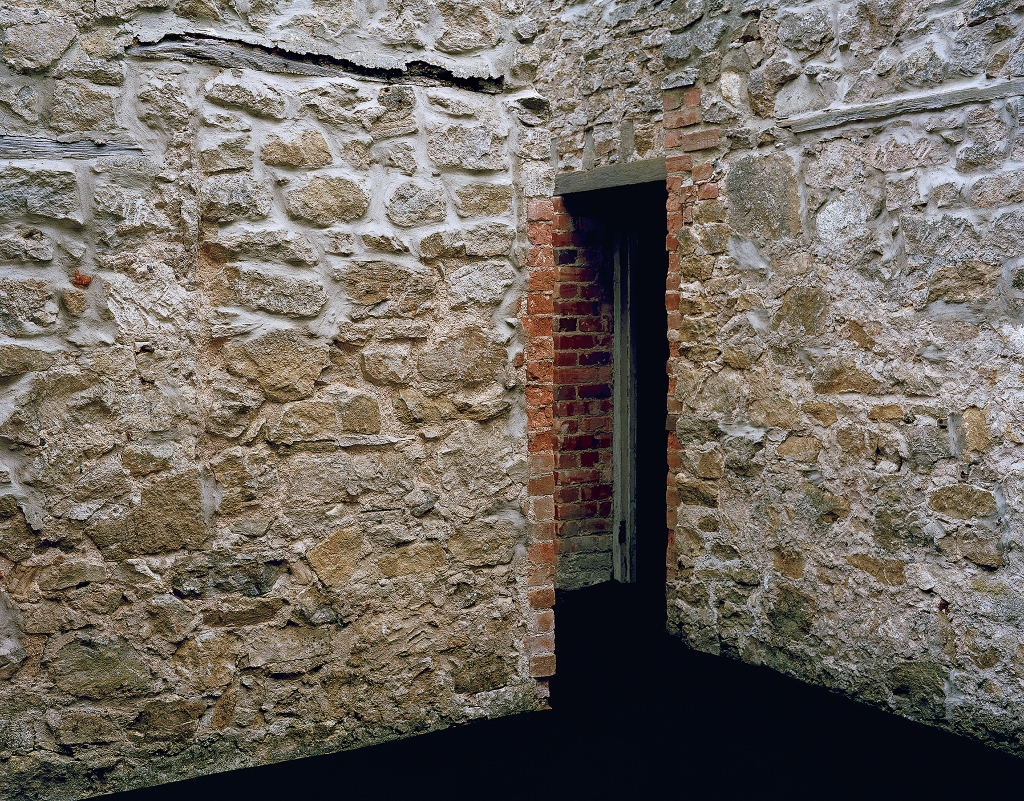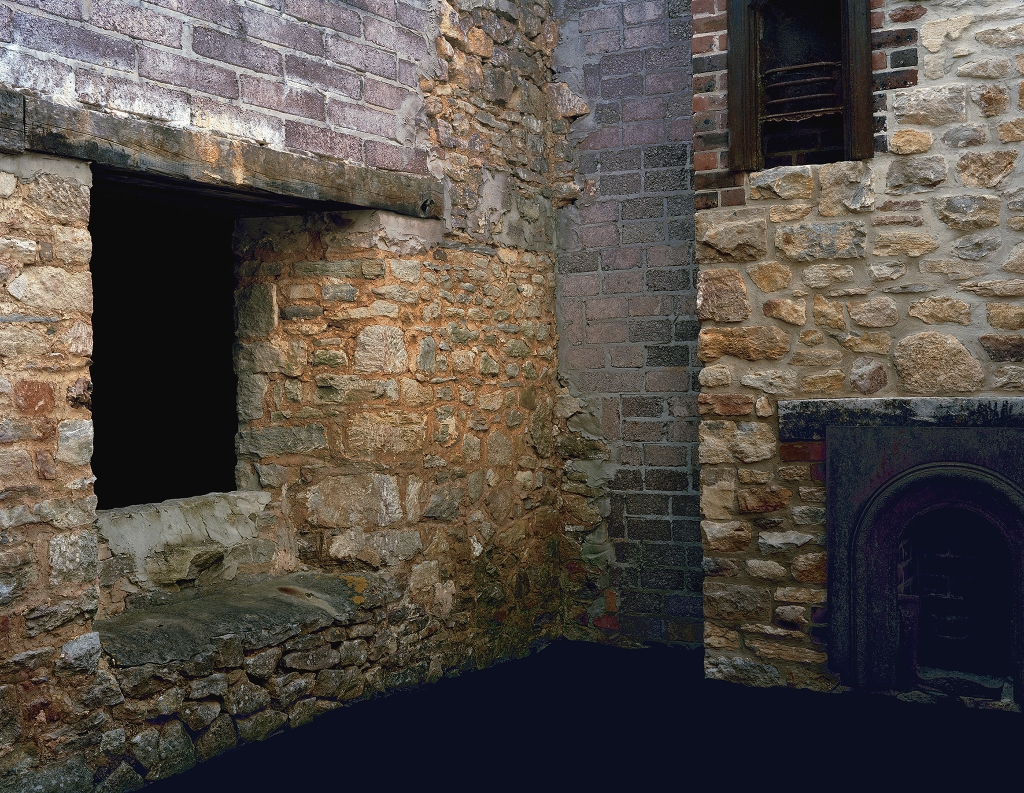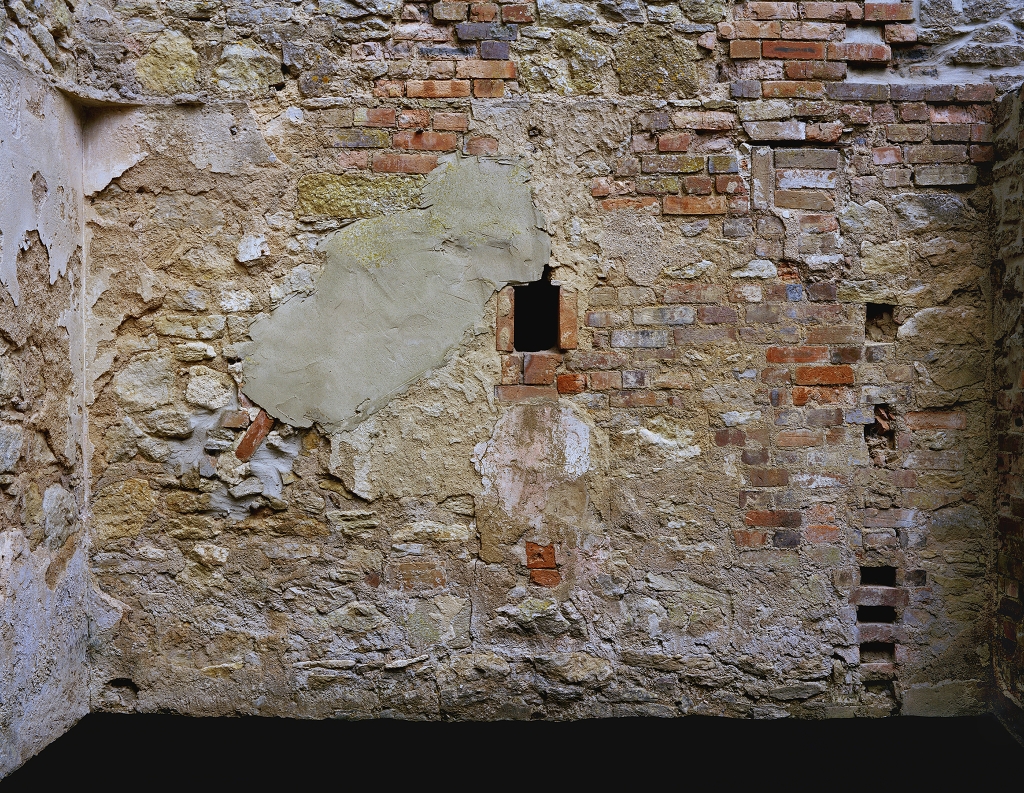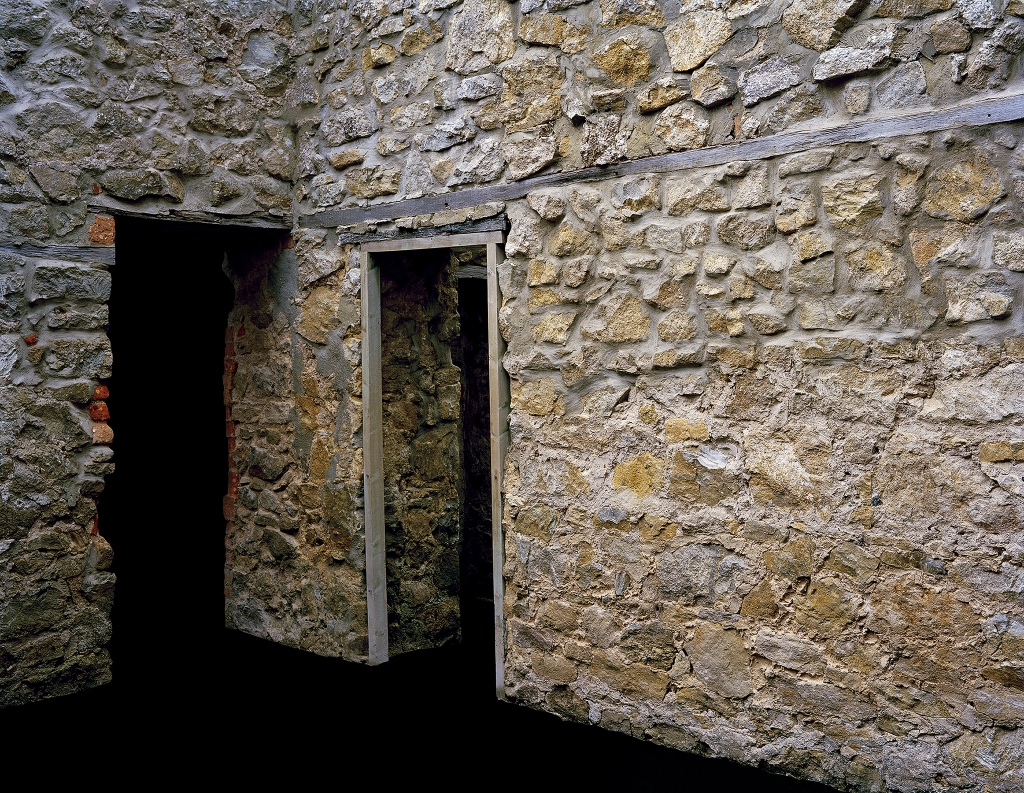La Posa
Tyneham was a lively, rural community in Dorset. Inhabited since the Iron Age, with 47 days notice, the population of 225 people was told on 1st November 1943 they would have to move out by the village’s new landlords – the army for whom the village became an obstacle for the military manoeuvres deemed essential for the war effort. Following official assurances of their right to return after the war, most villagers accepted the army’s decision and evacuated the village on the 17th December 1943. Their dream of returning to Tyenham went never fulfilled and the village remained abandoned, subject to the decay of passing years. Today the original buildings in ruin remain: all sense of human habitation has vanished.
La Posa engages with the idea of the house as an architectural and visual metaphor, comprising the idea of home as a place of identity, a point of origin and return. Las Posa is both house and home. The bare walls offer no emotional particularity, the physicality of the walls talk about the space as the exterior, the house, but in actual fact, it is the interior, the home, that is presented: barren, with all social interactions being removed. Blocked windows and doors refer to an impossibility of entering the house itself.
The title of the series refers to a faux-anthropological narrative by Juan Munoz featured in his small publication ‘Segment’. Munoz's tale evocates the site of the ‘posa’ related to the village Zurite in the highlands of Peru where every year a house is built, only to be destroyed a short time after. The ‘posa’ is an ephemeral building, almost skeletal, its form and destruction cyclical. The ‘posa’ gestures the impossibility of permanence and in its annual rhythmic interruption of its duration stems from the need to remember a story and from the suspicion of having forgotten it already.
